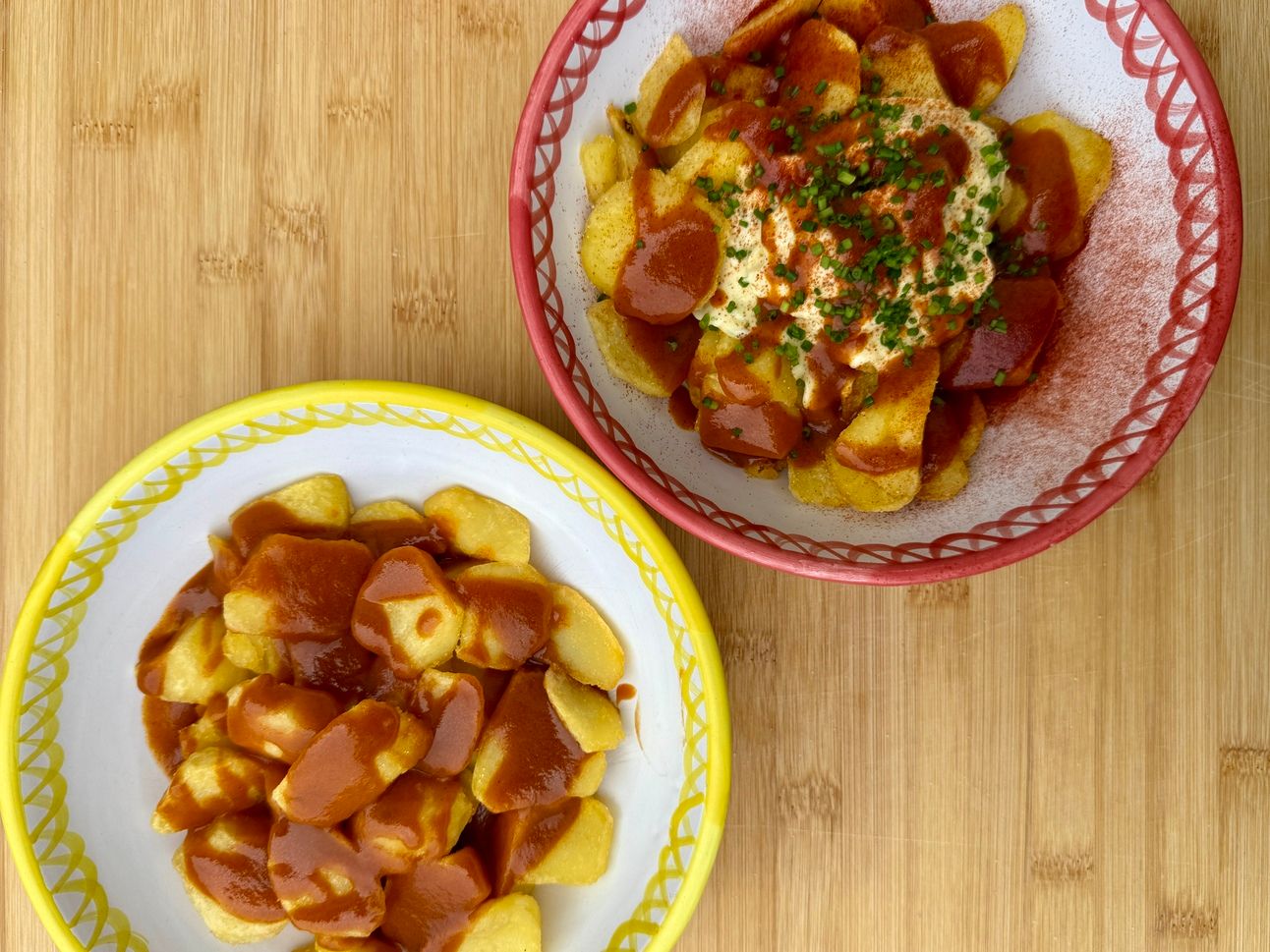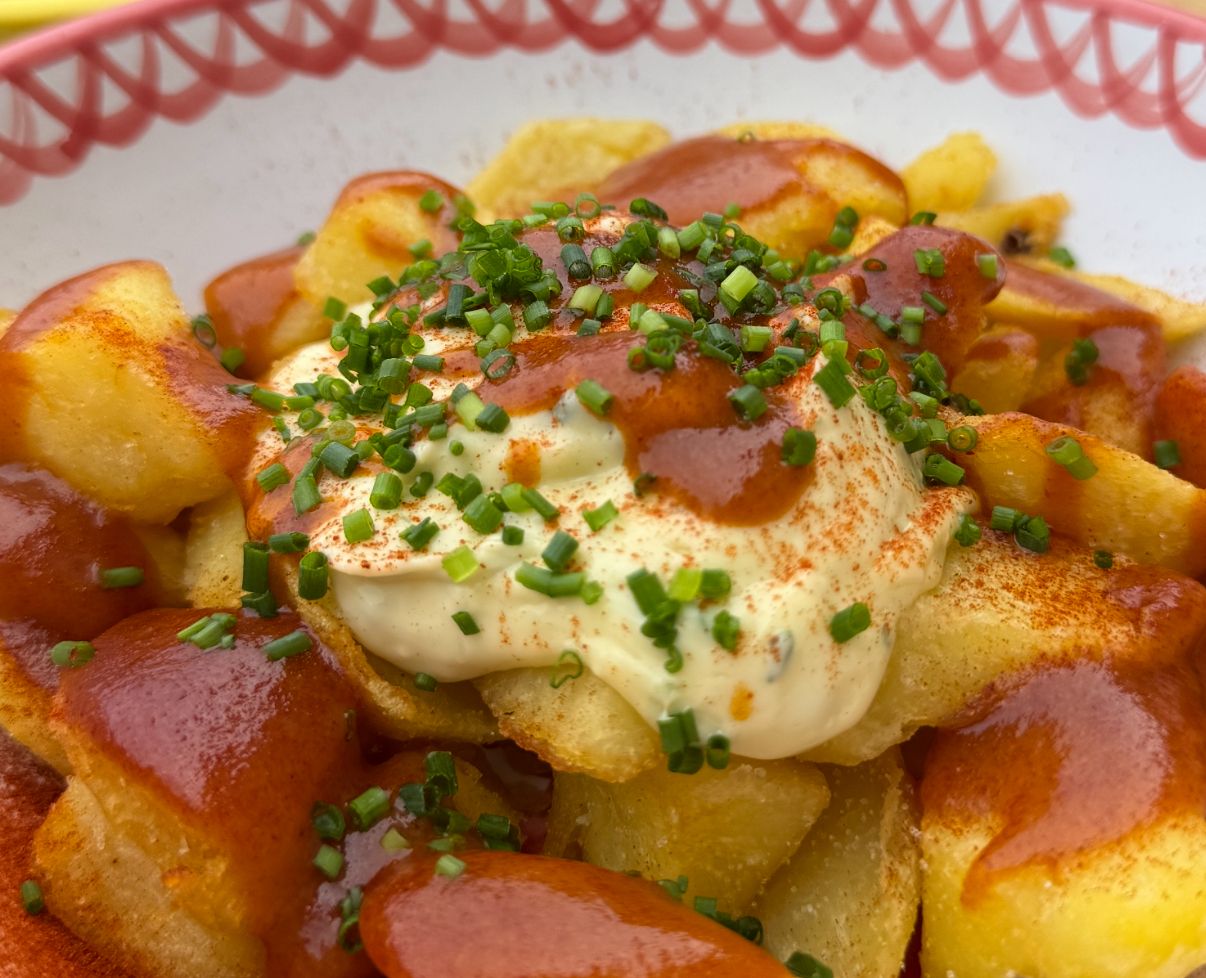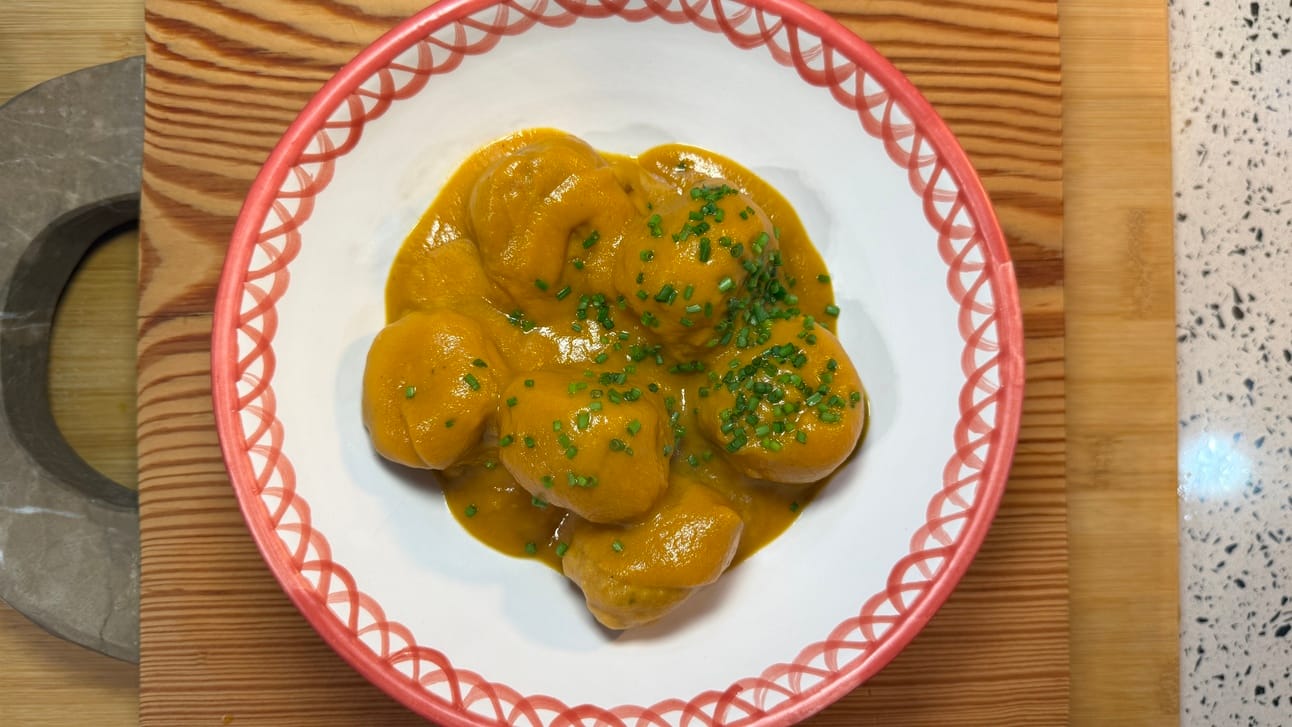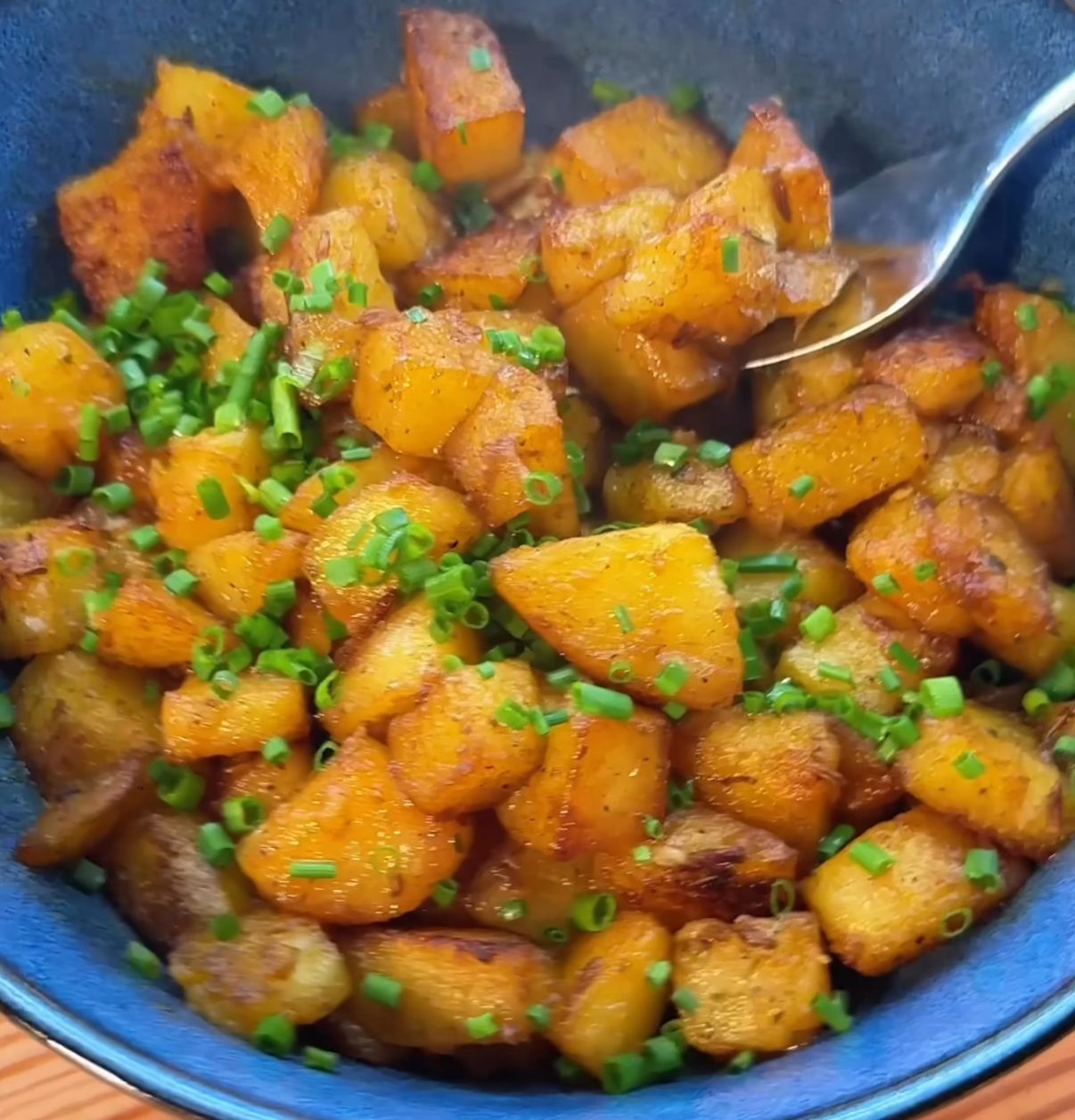- LA SOBREMESA
- Posts
- #2 Patatas bravas... Or how a potato recipe became the blank canvas of chefs all over Spain.
#2 Patatas bravas... Or how a potato recipe became the blank canvas of chefs all over Spain.
As many variations as taverns all over the spanish territory. Let's explore the possibilities, together with the reasons why this tapa is everywhere.

Patatas bravas if you order them in Madrid (left) vs if you order them in Barcelona (right).
Spain’s most beloved (and profitable?) tapa
Patatas bravas is without a doubt one of the most famous tapas from Spain… and I can tell you why: whether you run a gastrobar, a humble tavern, or even a fine-dining restaurant, the concept of serving crispy potatoes with a flavourful sauce always works.
And when you look at the numbers, it gets even better. A proper cost breakdown reveals that patatas bravas might be one of the most efficient ways to make a profit through food. Let me explain:
Cheap and accessible ingredients
Easy to prep in bulk - and easier to reheat during service. As I mention in my youtube vid, potatoes can be parboiled or pre-fried ahead of time. This is great for making things easier during the service.
Low cost, high perceived value. Sold at €4 to €6 per portion aprox, which is still considered affordable for the customer, but gets a solid margin from the 0,60€ to 0,90€ of cost per portion. A win-win.
But most importantly: everybody loves them. Locals, tourists… It doesn’t matter. It’s one of those dishes that invites you in. No explanation needed! To pair with a cold beer, as part of a shared tapas lunch, or simply because your inner Spanish instinct demands you to try -and judge- them every time they pop up on a menu.
A canvas for creativity
Over the last years, patatas bravas have become the perfect blank canvas for chefs to tweak, refine, and reinvent.
Though they’re believed to have originated in Madrid, today you’ll find unique versions in almost every city across Spain—and they’re all worth a try.
But what actually changes from one version to another?
Let’s break it down.
Starting with the potato itself
Variety: Most commonly used are monalisa, agria and kennebec. But they all react different to the frying, and they each have a slightly different flavour. So this is the first important decision a chef needs to make in order to develop the recipe.
Prep style: Peeled or skin-on… Cubed, wedged, hand-cut, or even cracked to create different textures on the cracked surface.
The cooking method
Deciding how to organise your mise en place also defines how your patatas bravas are going to look like. Most of times, bars and restaurants will pre-cook the potatoes ahead of time: it’s more convenient and also better for the final result. Some may parboil the potatoes in water, some others may confit them… I’ve even heard of people experimenting with a three times frying. Crispiness levels, and inner texture vary a lot depending on what method you choose.

The sauces
Controversial take incoming. I know some people are going to claim ‘‘patatas bravas’’ are only supposed to have one sauce: salsa brava. But, unfortunately for purists -and luckily for the rest of us-, the innovation on sauces present in this tapa is huge. Here are the most common:
The red sauce. Salsa brava
Mandatory. It’s the red sauce that is present -almost- every time with this tapa. But again, controversy has joined the chat: The original salsa brava is made out of texturising a beef dark broth with flour and a garlic-onion olive oil poached sofrito, spiced up with spicy smoked paprika and/or cayenne peppers.
But there is a variation that nowadays is as common as the original, but it’s actually a concentrated spicy tomato sauce. Both are amazing, but it’s true that they are completely different. Choose your fighter 🤣
The white sauce. (fake) allioli or ajonesa.
DISCLAIMER: No, that mayonnaise style sauce with a powerful garlic flavour is NOT an original allioli. The real one is supposed to be an emulsion of only garlic and oil (‘‘alli i oli’’ in catalan). So no egg here. We’ll dive into allioli properly another time.
Chefs around Spain experiment with this sauce a lot. It’s basically a garlic mayo, but it also has some cool variations depending on the type of fat used (from seed oils to evoo), the amount of egg (extra egg yolk would make the sauce ritcher and more yellow) or even the final texture using advanced techniques as making a foam with a siphon.
Extras
Chilli oil, chilli powder, even fermented sauces or pickled toppings in modern versions.
In my opinion, patatas bravas are less about one “authentic” recipe and more about Spain’s endless creativity with something simple. A dish that never tries too hard… and still wins every time. A good example of this, is the International Championship Of Patatas Bravas in Palencia, lands of the famous spanish smoked paprika ‘‘pimentón de la Vera’’.

Definetely far away from the traditional concept, but still pretty interesting to understand how far some restaurants have gone with creativity around Patatas Bravas.
If you want to learn more about bravas, there is a creator that literally made a whole career eating and rating bravas from all over Spain. He is called @bravasbarcelona on social media. His content is in spanish, but nowadays youtube have pretty accurate translation subtitles, so don’t hesitate to take a look to his channel to learn more stuff about this masterpiece of spanish gastronomy.
Recipes of the week 📝
Albóndigas en salsa española 💃
I guess almost all cultures have their own version of meatballs, right? Well, next time you are craving a complete and healthy meal, in less than 30 minutes, consider giving a try to this one. I can guarantee you are going to love it. The sauce is rich, smooth, packed with flavour and, for once in this channel and in spanish gastronomy, without being overloaded with oil 😅
I used this time a mix of pork and beef as the meat base, but don’t hesitate to go 100% beef or, why not, 100% iberic pork. I’ve tried that last option couple times and it’s great. And as usual, regarding the rest of ingredients, innovating is always welcome. I used tomato paste, but of course you can just drop one or two ripe tomatoes and cook a little bit longer. I used white wine, but why not just add a splash of a sherry wine, brandy or vodka, and flambeé the whole thing… Adapt to whatever you have around.
For around 15 meatballs
| For the sauce
|
Mix all the ingredients of the meatballs and form balls of 2-3 bites. Sear them in a pot with a couple of tbsp of olive oil, until they are slightly golden (don’t overcook them in this step!). Reserve.
In the same pot, add the vegetables chopped unevenly, and toast at high heat until some pieces are almost burnt. This is what makes the sauce special, to get some toasted-burnt pieces while some others are still ‘al dente’. It was not made by professional chefs, but by housewives that had many other things to do. So they would just chop everything directly from the hand to the pot.
Toast the saffron and add the tomato paste. Drop the meatballs back in, deglaze with the wine and cover with broth. Stew at low heat, covered, for around 10-15 minutes. Then blend the sauce, bring it to a boil again, and enjoy with some rice, fries, or whatever your soul demands 🫡🤩
PATATAS THE SPANISH WAY #6: ‘‘En adobillo’’
Why making boring plain potatoes when you can make this? It’s a pretty clever way to innovate a little bit and serve a tweaked side dish or, why not, just enjoy them as a tapa with a fried egg on top.
This technique of cooking something with a dressing of oil, vinegar and spices, reminds me to the beautiful concept of spanish ‘‘escabeche’’, a traditional elaboration made to preserve foods like mussels, chicken or anything similar. It definitely deserves a spot in this newsletter, so I’ll consider writing about it soon.
Recipe for around 4 servings
400 grams of potatoes (4 units)
4 tbsp of olive oil
15 grams of garlic (2-3 cloves)
1 tsp of cumin
1 tsp of oregano
2 tsp of salt
½ cup of sherry vinegar
½ cup of water
2 tsp of smoked paprika
For the ‘’majado’’, chop the garlic in big chunks and fry it at medium heat until golden. Transfer to a mortar and fry the oregano in the same oil, just for one or two minutes. Grind them both, together with some salt and the cumin. Once a coarse paste, add the vinegar and the water.
Use the same oil (already packed with a nice aroma from the previous step) to fry the potatoes at high heat, for around 15 minutes, until they soft and with some colour. Reserve the potatoes and remove most of the oil from the pan, but leave around 1-2 tbsp.
Once the oil has cooled down a little bit, drop the paprika, stir for 20-30 seconds and add the majado. Cook for around 5 minutes to evaporate most of the liquid, and get a delicious oily dressing on the pan. Now drop the potatoes back in, raise the heat, and stir fry for around two minutes.


Reply